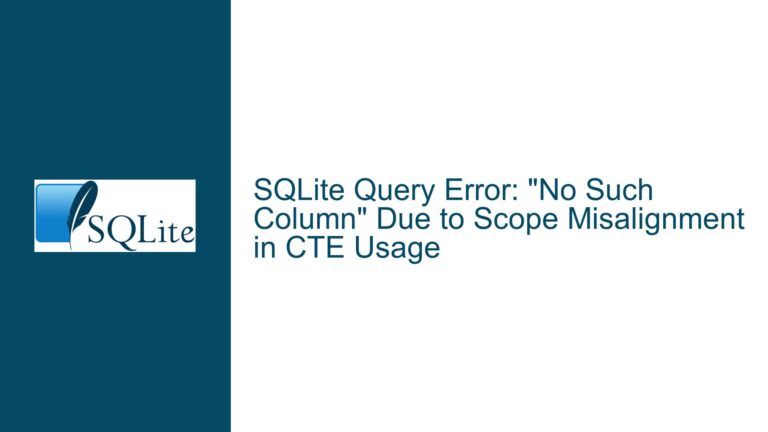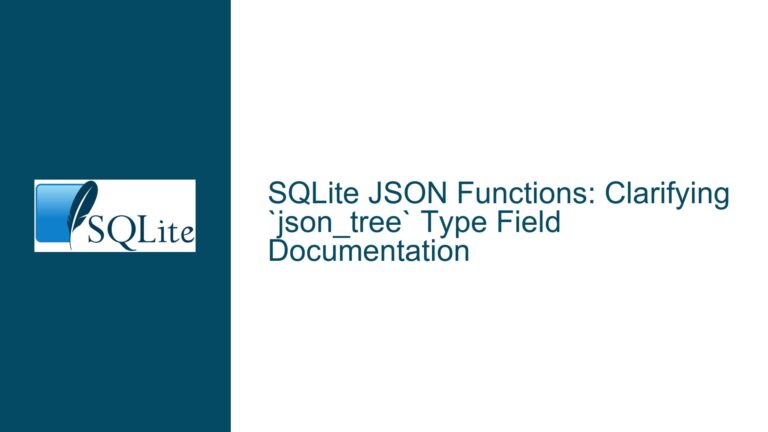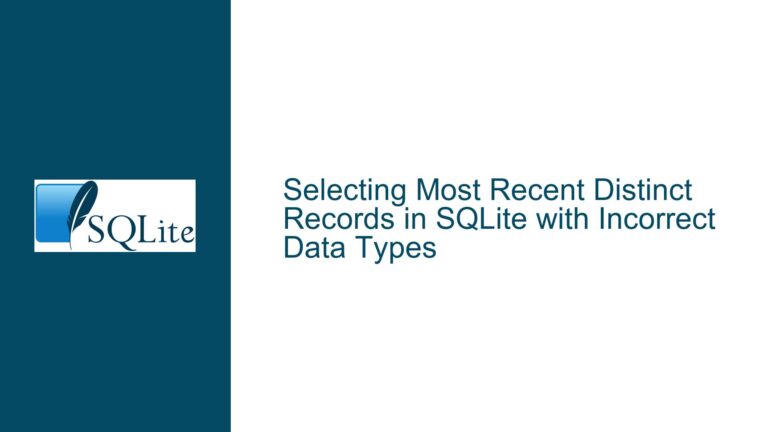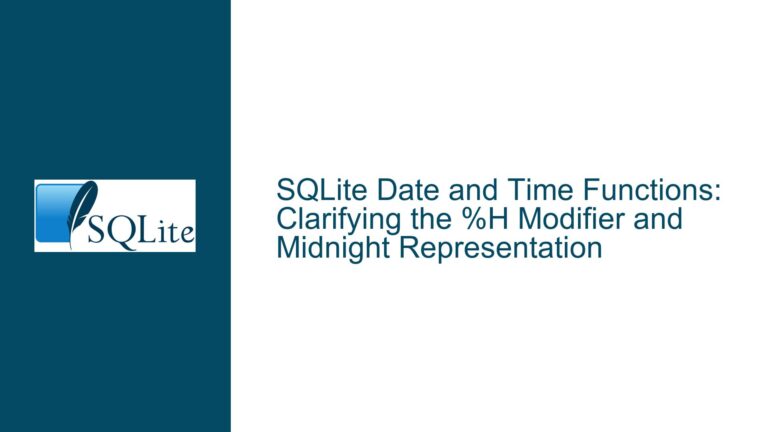SQLite CLI `.exit` Command and Broken Pipe Errors on Windows
SQLite CLI .exit Command Triggers Broken Pipe Errors on Windows When using the SQLite command-line interface (CLI) on Windows, particularly in scenarios where a script containing the .exit command is piped into the SQLite executable, users may encounter a "broken pipe" error. This error manifests as a message stating, "The process tried to write to…









